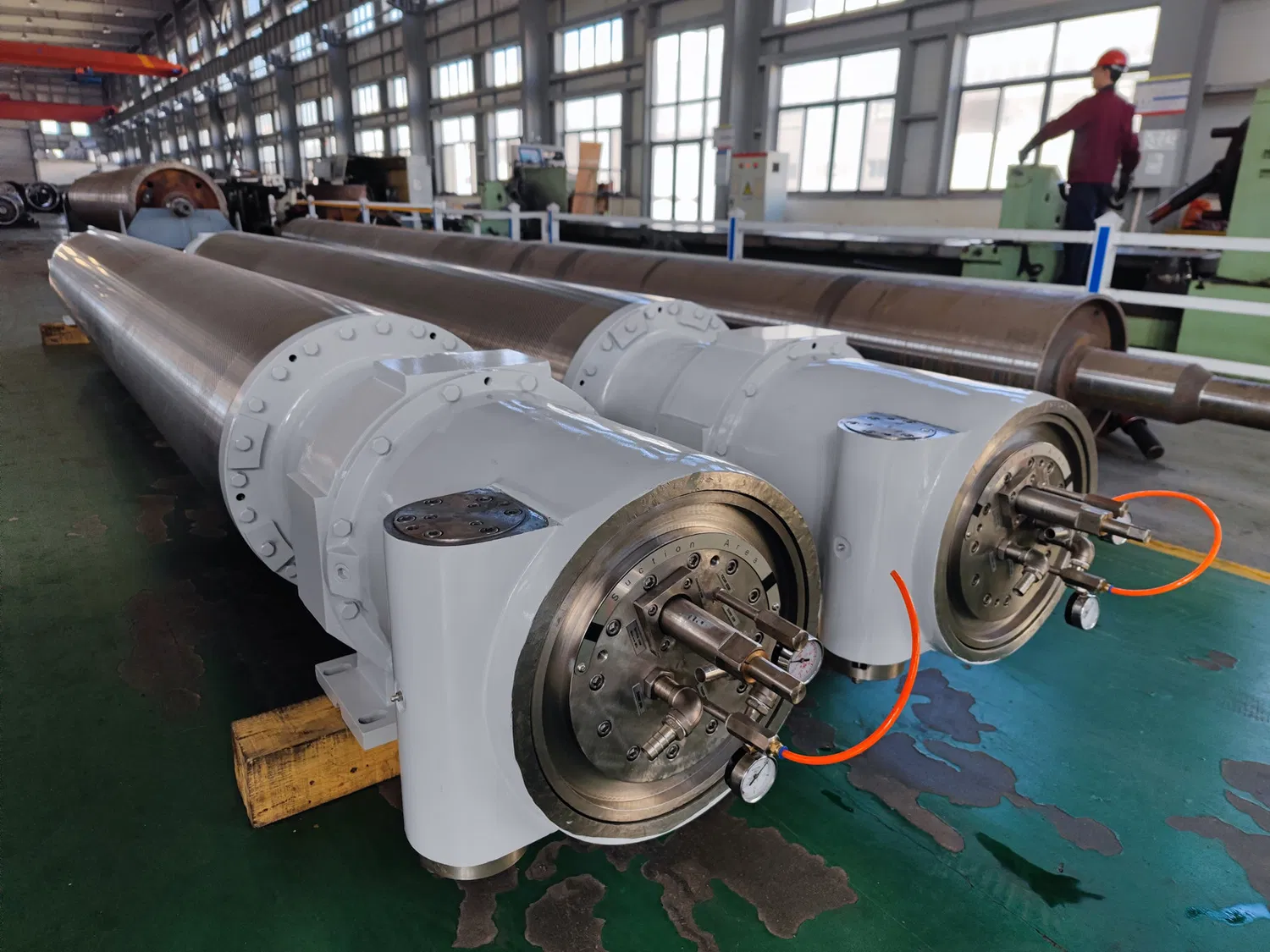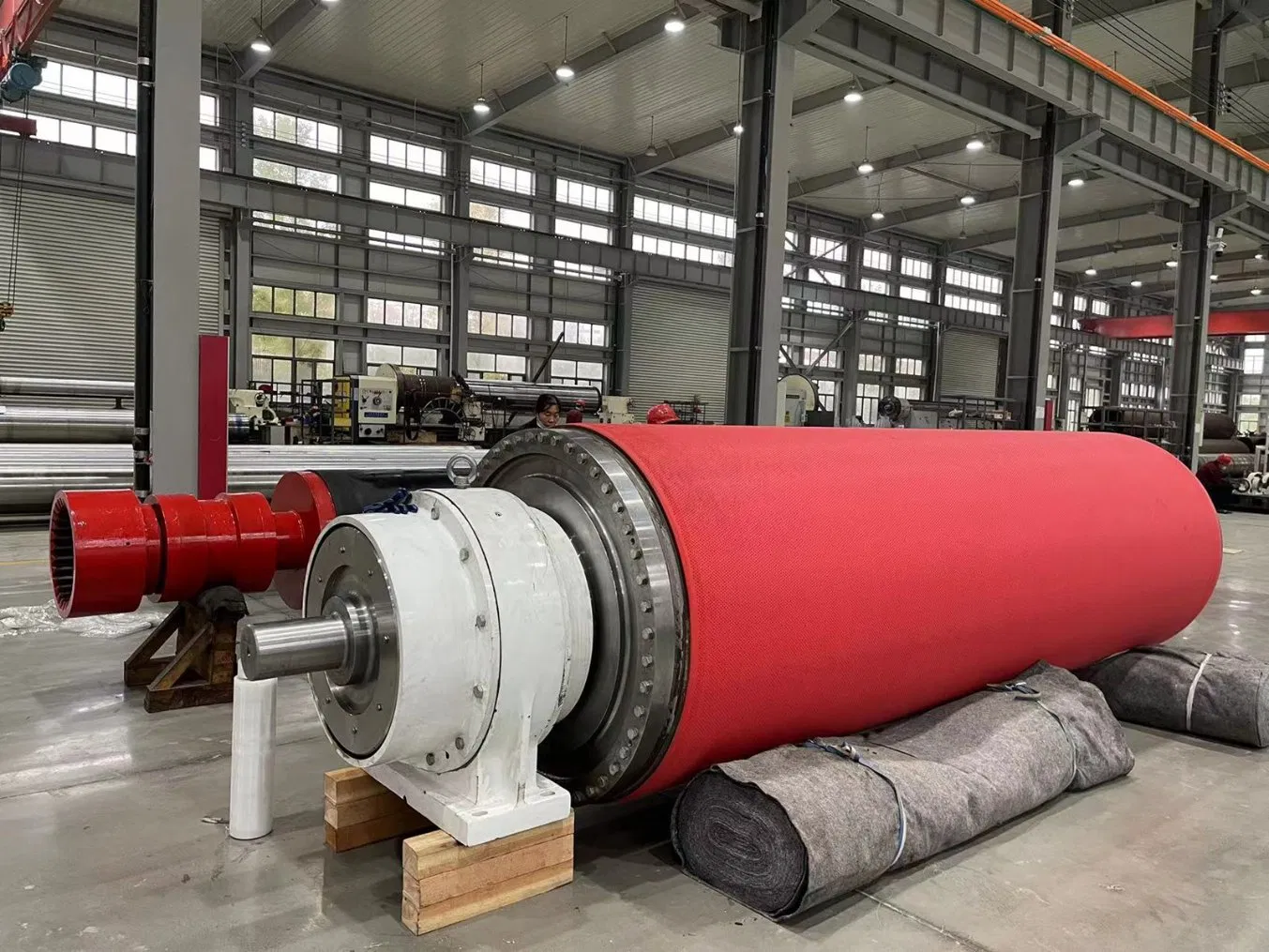Have you ever stood beside a paper machine in full operation? It’s a symphony of controlled chaos—a colossal, multi-section beast that transforms a slurry of pulp and water into a perfect, uniform sheet of paper at incredible speeds. It's a marvel of modern engineering. But, to be honest, that marvel is only as strong as its weakest part. A single failing bearing, a worn-out doctor blade, or a poorly manufactured press roll can bring the entire multi-million dollar operation to a grinding, costly halt. This is precisely why the selection of a paper machine components supplier isn't just a procurement task; it's a strategic decision that directly impacts your bottom line, product quality, and operational stability.
Frankly speaking, many mills fall into the trap of prioritizing upfront cost over long-term value. They source parts from the cheapest vendor, only to face premature failures, extended downtime, and quality control nightmares. A truly exceptional supplier does more than just ship a part in a box. They become an extension of your engineering and maintenance teams, offering expertise, reliability, and innovation. This guide will walk you through the essential criteria for identifying and partnering with a supplier who can help you optimize your machinery for peak performance and longevity.
Why Your Choice of Supplier Matters More Than You Think
It's easy to underestimate the profound impact a component supplier has on your entire operation. We often focus on the big picture—the overall efficiency of the machine, the skill of the operators—but the microscopic details of component quality are where reliability is truly forged. In my experience, the difference between a good year and a bad year often comes down to the reliability of the parts installed during maintenance shutdowns.
The Devastating Ripple Effect of a Single Component Failure
Imagine a critical press roll bearing fails unexpectedly. The immediate consequence is unscheduled downtime, which is expensive enough on its own. But the ripple effect is far worse. The sudden stop can damage the felt, score the roll surface, and even cause a sheet break that takes hours to clean up and re-thread. Production targets are missed, customer orders are delayed, and maintenance teams are pulled into a high-stress, reactive fire-fight instead of performing proactive work. It's a cascade of problems, all stemming from one subpar component. A premier supplier invests heavily in material science and quality control to ensure their components can withstand the immense pressures and harsh environments of a paper machine, drastically reducing the risk of such catastrophic failures.
Quality vs. Cost: The Long-Term ROI
Let's talk numbers. A cheaper component might save you a few thousand dollars on the initial purchase order. However, if that component lasts only 12 months instead of the 24-36 months a premium part would, you're not actually saving money. You're doubling your installation labor costs, doubling your associated downtime, and doubling your risk of an in-service failure over that three-year period. It's worth noting that high-quality components often lead to better performance. For instance, a precision-engineered suction roll shell can improve dewatering, allowing the machine to run faster or use less energy in the dryer section—the most energy-intensive part of the entire process. The return on investment for quality parts isn't just in their lifespan, but in the operational efficiencies they unlock.

Deconstructing the Paper Machine: Key Components to Focus On
To effectively evaluate a supplier, you need a solid understanding of the critical components throughout the machine. A paper machine is generally divided into several key sections, each with its own unique set of challenges and specialized parts. A competent supplier will have deep expertise in all of them.
The Wet End: Where the Sheet is Born
This is where it all begins. The quality of the final product is largely determined here. Key areas include:
- The Headbox: This is the heart of the machine, responsible for distributing a uniform fiber suspension across the full width of the machine. Components like turbulence generators and slice lips require incredible precision to prevent streaks and basis weight variations.
- The Forming Section: Here, water is drained from the pulp slurry to form a fragile web. This section contains forming fabrics, foils, suction boxes, and rolls. Wear-resistant ceramic drainage elements and durable roll covers are crucial for performance and longevity. Finding a supplier with expertise in paper machine wet end components is non-negotiable for any mill focused on quality.
- The Press Section: This section mechanically squeezes more water out of the sheet using large rolls exerting immense pressure. The components here, including press rolls, felts, and doctor blades, must withstand incredible forces and wear.
The Dryer Section: The Energy Hog
After the press section, the paper sheet enters a long series of steam-heated cast-iron cylinders. This is the most energy-intensive part of the papermaking process. Efficiency is paramount. A top-tier supplier will provide high-performance components like:
- Dryer Cans (Cylinders): Must be perfectly balanced and have uniform heat transfer properties.
- Steam Joints and Syphons: These are critical for efficiently getting steam into the dryers and condensate out. A poorly designed or failing syphon system can lead to uneven drying, sheet breaks, and wasted energy.
The Finishing End: Perfecting the Product
This is where the paper gets its final characteristics. Components here determine the smoothness, gloss, and final format of the product.
- Calenders: Stacks of hard, polished rolls that increase the paper's smoothness and gloss. Roll quality is absolutely critical.
- Reels and Winders: These components wind the finished paper onto large parent rolls and then slit them into smaller, customer-ready rolls. Parts like slitter blades and core chucks need to be reliable to prevent waste and ensure roll quality.
The Hallmarks of a Top-Tier Paper Machine Components Supplier
Now that we've covered the "what" and the "why," let's focus on the "how." How do you distinguish an average vendor from a true strategic partner? Many experts agree that it comes down to a few key, non-negotiable characteristics.
Unwavering Commitment to Material Quality and Precision Engineering
This is the foundation of everything. A great supplier doesn't just source metal; they are experts in metallurgy. They understand which stainless steel alloys are best for corrosive wet-end environments and which composite materials offer the best wear life for doctor blades. Ask potential suppliers about their material sourcing, their machining tolerances, and their quality control processes. Do they have ISO 9001 certification? Can they provide material traceability reports? A supplier who is proud of their engineering and quality will be happy to share this information.
Customization and Engineering Support
No two paper machines are identical. They are often modified and upgraded over decades of service. This is where a supplier's ability to provide custom paper machine component manufacturing becomes invaluable. Can they reverse-engineer a worn-out part for which no blueprint exists? Can their engineers work with your team to design an upgraded component that solves a recurring problem? A supplier who offers this level of engineering collaboration is a true partner, not just a parts seller.

Comprehensive Inventory and Rapid Response
When a critical component fails, time is money—a lot of it. A superior supplier understands this and maintains a significant inventory of common wear parts. They have a streamlined logistics network to get you the part you need, fast. Inquire about their standard lead times for both stock and custom parts. Do they offer expedited services for emergency situations? Their answer will tell you a lot about their commitment to minimizing your downtime.
A Practical Checklist: How to Find Reliable Paper Mill Parts
Finding the right supplier can feel overwhelming. To simplify the process, here is a practical checklist you can use when you need to find reliable paper mill parts and evaluate potential partners. It’s a framework I've used successfully to vet suppliers for major capital projects and routine maintenance needs alike.
- Assess Their Industry Experience and Reputation: How long have they been serving the pulp and paper industry? A long track record is often a good sign of stability and expertise. Don't be afraid to ask for references from mills with similar operations to your own.
- Request Case Studies or Client Testimonials: A confident supplier will have success stories to share. Look for case studies that demonstrate how their components solved a specific problem, improved efficiency, or extended maintenance intervals.
- Drill Down on Quality Control: Ask for a detailed overview of their QC process. What checks are performed during manufacturing? What final inspections are done before shipping? Do they use advanced measurement tools like Coordinate Measuring Machines (CMMs)?
- Discuss Their Supply Chain and Lead Times: Be direct. Ask about their inventory levels for the parts you purchase most frequently. Understand their standard lead times and what factors might cause delays. A transparent supplier will give you honest answers.
- Evaluate Their Technical Support: What happens after the sale? Do they have experienced technicians or engineers you can call for installation advice or troubleshooting? This after-sales support is a huge differentiator.
- Understand Their Warranty and Return Policies: A strong warranty is a sign of a supplier's confidence in their product. Make sure you understand the terms and the process for making a claim.
By systematically working through these points, you can build a comprehensive profile of a supplier and make an informed decision that goes far beyond a simple price comparison. It's about finding a partner you can trust to keep your machines running smoothly.
The Future of Papermaking: Innovation and Supplier Collaboration
The paper industry is not static. It's constantly evolving to become more efficient, more sustainable, and more competitive. The role of the component supplier is evolving right along with it. A forward-thinking paper machine components supplier is not just focused on today's needs but is actively working on the solutions for tomorrow.
Interestingly enough, we're seeing a rise in "smart" components embedded with sensors that can monitor vibration, temperature, and stress in real-time. This data feeds into predictive maintenance systems, allowing mills to replace a part just before it fails, turning costly unplanned downtime into a scheduled, efficient maintenance task. Furthermore, there's a significant push towards sustainable manufacturing, with suppliers developing components from recycled materials or designing parts that help mills reduce their energy and water consumption. The future lies in a deeper, more collaborative relationship where the supplier and the mill work together as strategic partners, sharing data and insights to drive continuous improvement across the entire operation.
In conclusion, selecting a supplier is one of the most critical decisions a mill manager or maintenance supervisor can make. It requires a shift in mindset—from viewing components as a commodity to recognizing them as a cornerstone of operational excellence. By focusing on engineering quality, technical expertise, responsive service, and a collaborative spirit, you can forge a partnership that not only prevents failures but actively enhances your machine's performance and profitability for years to come.
For more detailed information, please visit our official website:Paper machine components supplier
About the author: John Carter is a veteran pulp and paper industry consultant with over 25 years of hands-on experience in mill operations and maintenance management. He specializes in process optimization and reliability engineering, helping mills across the globe improve efficiency and reduce operational costs. John is passionate about sharing his insights on the critical link between component quality and overall plant profitability. ---


